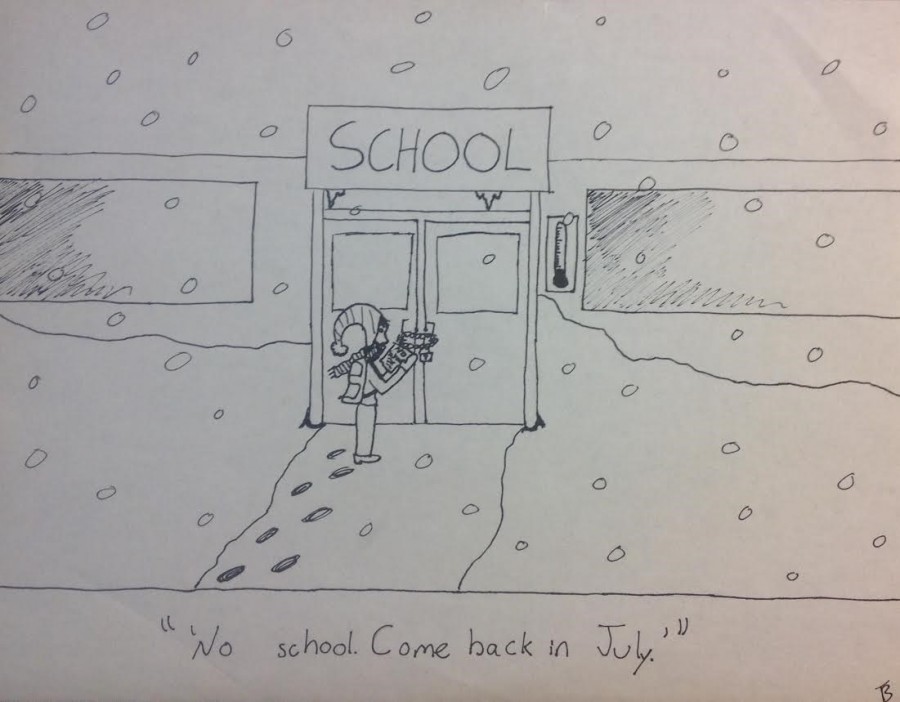Snow days: why year-round school does not have to be the answer
Walking through the halls of Mercy, one can hear plenty of discussion about numbers. Grades, math problems, and ACT scores are all common topics to hear about when students move from class to class. The most important number, though, seems to be -20.
This is the commonly accepted temperature at which schools begin to close because of the cold, and it has received plenty of attention lately.
In the past few years, the frigid temperatures and snowfall nationwide have been record-breaking. As a result, students appear to be spending more time at home than in years past. The prospect of having a day off because of winter conditions inevitably brings ample chatter and excitement, and more often than not, a late night tweet from the school account announcing there will be no school the next day.
Students everywhere understandably rejoice at the news of ‘no school’, but what some school districts across the country are considering may put a damper on that happiness: a year-round school year, meaning the elimination of summer break.
This decision, however, is not necessarily a good one.
State Representative Tim Greimel argues for the opposite. “One option is to go to more of a year-round school,” Greimel told Local 4 News. “Not necessarily more total days, but spread the days out more evenly throughout the school year so that it’s easier to add days in the summertime.”
Though some schools have had success with year-round school, it is not likely to work for all situations. In a climate like Michigan’s, where the year-round temperatures can be so extreme, having school throughout the middle of summer may cause even more closures. If schools are closing now for low temperatures, they would probably have to close for high temperatures as well. In schools without reliable air conditioning, humidity would likely become the summer version of windchill. Schools would be forced to close on extremely hot days because of this, either to keep children from sitting in hot classrooms all day or to prevent them walking to and from school in high temperatures.
With the potential of even more days off, not to mention the backlash schools would almost certainly receive for ditching summer break, it makes one wonder if year-round school is really the answer.
An alternative could be to remove schools’ winter breaks and replace them with snow days. If the snow days are not used up by the end of the season, the vacation days could be added onto a spring break or long weekend. Or, the system in place now could be preserved. Schools are given a set number of days they are allowed to miss before having to make them up during spring break or at the very beginning of summer break.
As for Mercy, year-round school to compensate for snow days does not seem likely, thanks to the unique schedule.
“I’m not speaking officially, but I’m going to say the chances are slim,” said Dean of Students Ms. Eleasha Tarplin. “As a Catholic school, we don’t have to adhere to the policies of public schools. In terms of making up these lost days, our schedule lends itself to that. “

